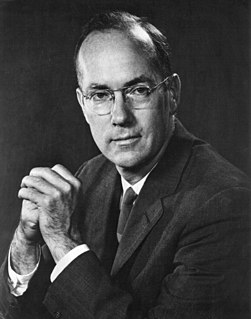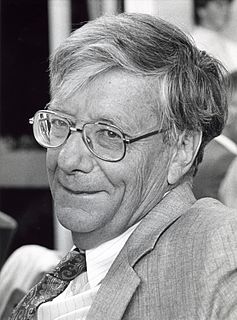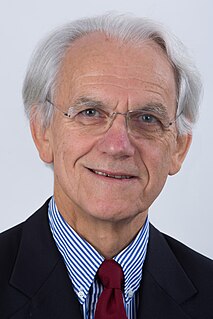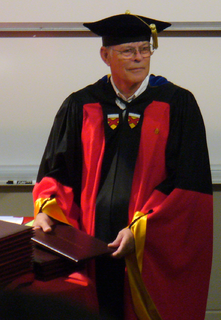Publications
| | This section needs expansion. You can help by adding to it. (May 2011) |
Richart E. Slusher | |
|---|---|
| Born | 1938 |
| Nationality | American |
| Alma mater | University of California at Berkeley (PhD) |
| Known for | Optics Quantum information science |
| Scientific career | |
| Institutions | Georgia Tech Research Institute Bell Laboratories |
Richart Elliott Slusher (born 1938) is a regents researcher and a principal research scientist at the Georgia Tech Research Institute, and the director of the Georgia Tech Quantum Institute.
Slusher received a Ph.D. in physics from the University of California at Berkeley in 1965. [1] [2]
Slusher worked at Bell Laboratories from 1965 to 2007, where he directed a research department focused on optical and quantum device physics from 1977 to 2005. Since 2005, he has worked at the Georgia Tech Research Institute. [1]
Slusher received the 1989 Einstein Prize for Laser Science, the 1995 Arthur L. Schawlow Prize in Laser Science from the American Physical Society and the 2006 Max Born Award from the Optical Society of America. [1] [3] [4]
| | This section needs expansion. You can help by adding to it. (May 2011) |

Charles Hard Townes was an American physicist. Townes worked on the theory and application of the maser, for which he obtained the fundamental patent, and other work in quantum electronics associated with both maser and laser devices. He shared the 1964 Nobel Prize in Physics with Nikolay Basov and Alexander Prokhorov. Townes was an adviser to the United States Government, meeting every US president from Harry S. Truman (1945) to Bill Clinton (1999).

Nicolaas Bloembergen was a Dutch-American physicist and Nobel laureate, recognized for his work in developing driving principles behind nonlinear optics for laser spectroscopy. During his career, he was a professor at Harvard University and later at the University of Arizona and at Leiden University in 1973.

Arthur Leonard Schawlow was an American physicist and co-inventor of the laser with Charles Townes. His central insight, which Townes overlooked, was the use of two mirrors as the resonant cavity to take maser action from microwaves to visible wavelengths. He shared the 1981 Nobel Prize in Physics with Nicolaas Bloembergen and Kai Siegbahn for his work using lasers to determine atomic energy levels with great precision.

Gérard Albert Mourou is a French scientist and pioneer in the field of electrical engineering and lasers. He was awarded a Nobel Prize in Physics in 2018, along with Donna Strickland, for the invention of chirped pulse amplification, a technique later used to create ultrashort-pulse, very high-intensity (petawatt) laser pulses.

Theodor Wolfgang Hänsch is a German physicist. He received one fourth of the 2005 Nobel Prize in Physics for "contributions to the development of laser-based precision spectroscopy, including the optical frequency comb technique", sharing the prize with John L. Hall and Roy J. Glauber.
Marlan Orvil Scully is an American physicist best known for his work in theoretical quantum optics. He is a professor at Texas A&M University and Princeton University. Additionally, in 2012 he developed a lab at the Baylor Research and Innovation Collaborative in Waco, Texas.
Federico Capasso, a prominent applied physicist, was one of the inventors of the quantum cascade laser during his work at Bell Laboratories. He is currently on the faculty of Harvard University. He has co-authored over 450 papers, edited four volumes, and holds over 60 US patents.

Peter Zoller is a theoretical physicist from Austria. He is Professor at the University of Innsbruck and works on quantum optics and quantum information and is best known for his pioneering research on quantum computing and quantum communication and for bridging quantum optics and solid state physics.
The Arthur L. Schawlow Prize in Laser Science is a prize that has been awarded annually by the American Physical Society since 1991. The recipient is chosen for "outstanding contributions to basic research which uses lasers to advance our knowledge of the fundamental physical properties of materials and their interaction with light". The prize is named after Arthur L. Schawlow (1921–1999), laser pioneer and Nobel laureate, and as of 2007 is valued at $10,000.
Margaret Mary Murnane NAS AAA&S is Distinguished Professor of Physics at the University of Colorado at Boulder, having moved there in 1999, with past positions at the University of Michigan and Washington State University. She is currently Director of the STROBE NSF Science and Technology Center, and is among the foremost active researchers in laser science and technology. Her interests and research contributions span topics including atomic, molecular, and optical physics, nanoscience, laser technology, materials and chemical dynamics, plasma physics, and imaging science. Her work has earned her multiple awards including the prestigious MacArthur Fellowship award in 2000, the Frederic Ives Medal/Quinn Prize in 2017, the highest award of The Optical Society, and the 2021 Benjamin Franklin Medal in Physics.

Robert Louis Byer is a physicist. He was president of the Optical Society of America in 1994 and of the American Physical Society in 2012.
Erich P. Ippen is a principal investigator in the Research Laboratory of Electronics (RLE) at the Massachusetts Institute of Technology (MIT). He holds appointments as the Elihu Thomson Professor of Electrical Engineering Emeritus and Professor of Physics Emeritus. He is one of the leaders of RLE’s Optics and Quantum Electronics Group.
Paul Bruce Corkum is a Canadian physicist specializing in attosecond physics and laser science. He holds a joint University of Ottawa–NRC chair in Attosecond Photonics. He is one of the students of strong field atomic physics, i.e. atoms and plasmas in super-intense laser fields.

David Jeffrey Wineland is an American Nobel-laureate physicist at the National Institute of Standards and Technology (NIST) physics laboratory. His work has included advances in optics, specifically laser-cooling trapped ions and using ions for quantum-computing operations. He was awarded the 2012 Nobel Prize in Physics, jointly with Serge Haroche, for "ground-breaking experimental methods that enable measuring and manipulation of individual quantum systems".

Peter Pitirimovich Sorokin was an American Russian physicist and co-inventor of the dye laser. He was born in Boston and grew up in Winchester, Massachusetts. He attended Harvard University, receiving a BA degree in 1952 and a PhD in Applied Physics in 1958; his PhD thesis adviser was Nicolaas Bloembergen.
H. Jeff Kimble, is the William L. Valentine Professor and Professor of Physics at Caltech. His research is in quantum optics and is noted for groundbreaking experiments in physics including one of the first demonstrations of teleportation of a quantum state, quantum logic gate, and the development of the first single atom laser. According to Elizabeth Rogan, OSA CEO, "Jeff has led a revolution in modern physics through his pioneering research in the coherent control of the interactions of light and matter." Kimble's main research focus is in quantum information science and the quantum dynamics of open systems.

The Einstein Prize for Laser Science was a recognition awarded by the former Society for Optical and Quantum Electronics and sponsored by the Eastman Kodak Company. The prize, awarded in the 1988–1999 period, consisted of a 3-inch brass medal including Einstein's image and a depiction of a two-level transition including the A and B coefficients. Recipients of the prize include:

Anne L'Huillier is a French physicist, and professor of atomic physics at Lund University.

Charles Vernon (Chuck) Shank is an American physicist, best known as the director of the Lawrence Berkeley National Laboratory from 1989 to 2004.
The I. I. Rabi Prize in Atomic, Molecular, and Optical Physics is given by the American Physical Society to recognize outstanding work by mid-career researchers in the field of atomic, molecular, and optical physics. The award was endowed in 1989 in honor of the physicist I. I. Rabi and has been awarded biannually since 1991.